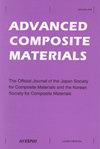鸟击时飞机复合材料风扇叶片的摆动运动
IF 2.3
3区 材料科学
Q3 MATERIALS SCIENCE, COMPOSITES
引用次数: 0
摘要
摘要为了减轻航空发动机的重量,研制了碳纤维增强塑料(CFRP)复合风扇叶片。飞机风扇叶片会受到外来物体的高速冲击,比如鸟撞。由于CFRP的抗冲击性比金属材料低,因此不仅要关注冲击点可能出现的故障,还要关注风机叶片尖端和后缘可能出现的故障。建立了复合材料风扇叶片几何结构的有限元分析模型,研究了鸟击时复合材料风扇叶片的动态变形。通过自振分析和瞬态响应分析,分析了风机叶片周边的振动特性。自振分析表明,叶片面外方向的振型为低阶振型。在瞬态响应分析中,当一组由状态方程和SPH方法定义的粒子碰撞时,在碰撞后立即观察到外围的突然变形,称为鞭打运动。展向应变的峰值在扇叶后缘,弦向应变的峰值在扇叶前缘。此外,叶片旋转时的瞬态响应分析表明,峰值应变值增加。下面的立即影响载荷和位移比较表明,离心力的影响几何刚度增加,这增加了反应部队由于风扇叶片,增加峰值。关键词:有限元法(FEM)LS - DYNAsmoothed particle hydrodynamics法(SPH)固有频率分析动态瞬态响应分析披露声明作者未报告潜在利益冲突。本文章由计算机程序翻译,如有差异,请以英文原文为准。
Whipping motion of airplane composite fan blades due to bird strike
AbstractComposite fan blades made of CFRP have been developed and investigated to reduce the weight of aircraft engines. Aircraft fan blades are subjected to high-speed impact by foreign objects, such as bird strikes. Because CFRP has lower impact resistance than metal materials, it is necessary to focus on possible failure not only at the impact point but also at the tip and trailing edge of the fan blade. This paper developed a finite element analysis model of fan blade geometry and investigated the dynamic deformation that may induce peripheral fracture when a bird strike occurs on a composite fan blade. Natural vibration analysis and transient response analysis were performed to analyze the vibration behavior at the fan blade periphery. The natural vibration analysis showed that the vibration modes in the out-of-plane direction of the blade are of low order. In the transient response analysis, when a group of particles defined by the equation of state and the SPH method collided, a sudden deformation in the periphery, called a whipping motion, was observed immediately after the impact. The spanwise strain has a peak value at the trailing edge of the fan blade, while the chordwise strain has a peak value at the leading edge of the fan blade. Furthermore, the transient response analysis with the fan blades rotating showed an increase in the peak strain value. A comparison of the impact loads and displacements immediately below the impact indicated that the centrifugal force increased the geometric stiffness, which increased the reaction force due to the fan blade, increasing the peak value.Keywords: Finite element method (FEM)LS−DYNAsmoothed particle hydrodynamics method (SPH)natural frequency analysisdynamic transient response analysis Disclosure statementNo potential conflict of interest was reported by the author(s).
求助全文
通过发布文献求助,成功后即可免费获取论文全文。
去求助
来源期刊

Advanced Composite Materials
工程技术-材料科学:复合
CiteScore
5.00
自引率
20.70%
发文量
54
审稿时长
3 months
期刊介绍:
"Advanced Composite Materials (ACM), a bi-monthly publication of the Japan Society for Composite Materials and the Korean Society for Composite Materials, provides an international forum for researchers, manufacturers and designers who are working in the field of composite materials and their structures. Issues contain articles on all aspects of current scientific and technological progress in this interdisciplinary field. The topics of interest are physical, chemical, mechanical and other properties of advanced composites as well as their constituent materials; experimental and theoretical studies relating microscopic to macroscopic behavior; testing and evaluation with emphasis on environmental effects and reliability; novel techniques of fabricating various types of composites and of forming structural components utilizing these materials; design and analysis for specific applications.
Advanced Composite Materials publishes refereed original research papers, review papers, technical papers and short notes as well as some translated papers originally published in the Journal of the Japan Society for Composite Materials. Issues also contain news items such as information on new materials and their processing."
 求助内容:
求助内容: 应助结果提醒方式:
应助结果提醒方式:


